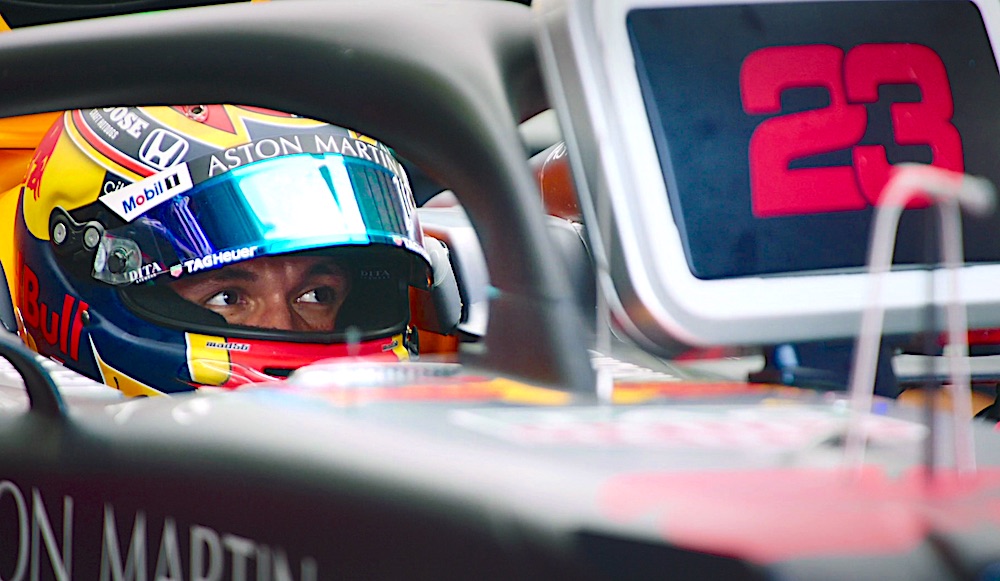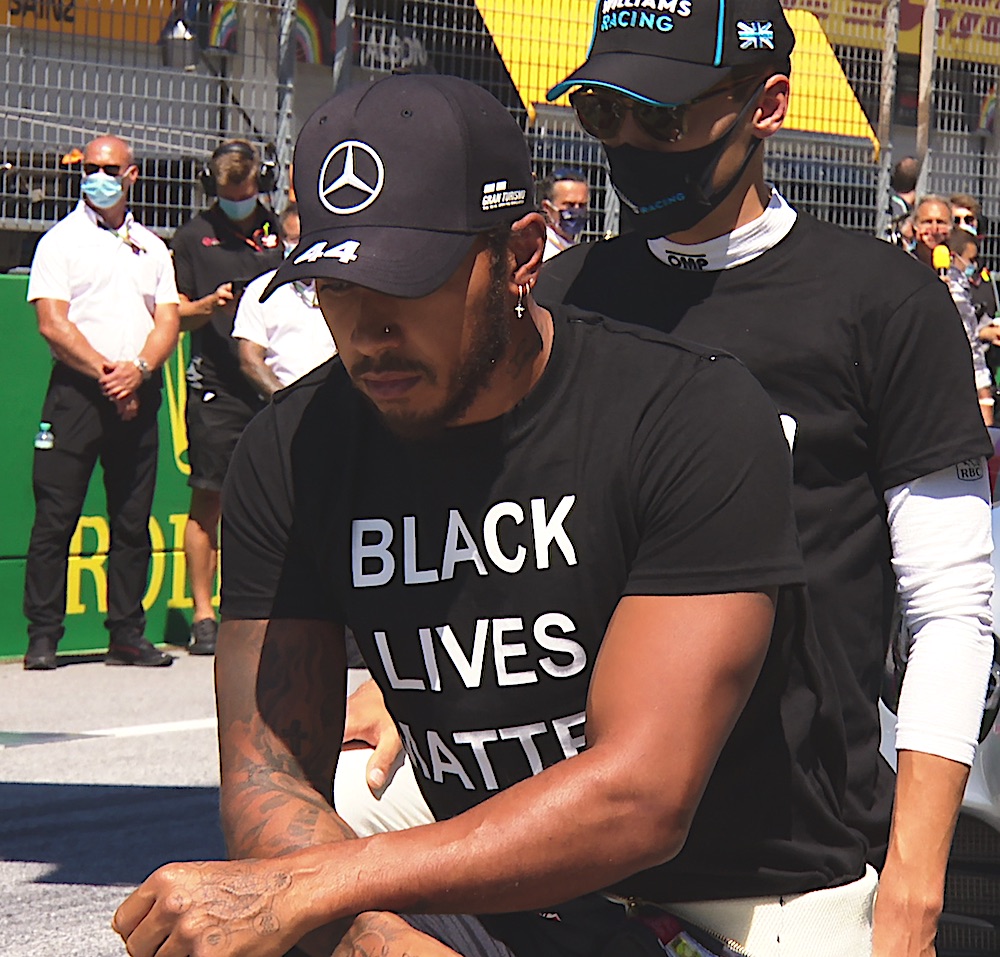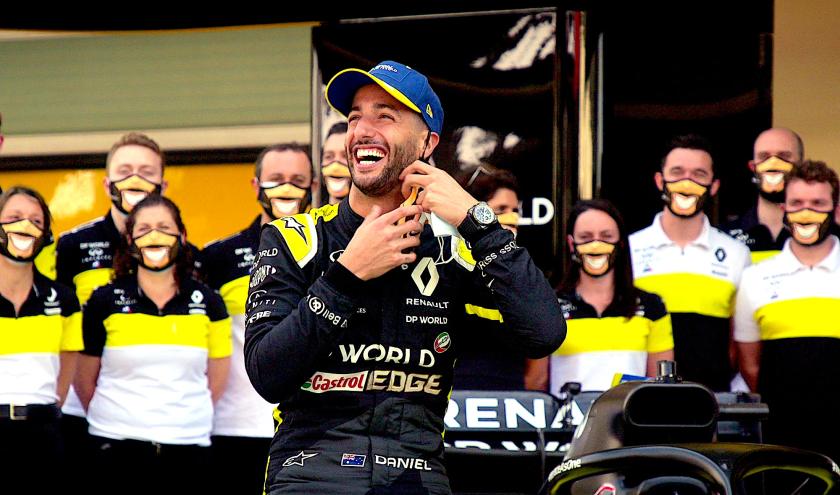The 2020 Formula One season was all set to start in Australia last March when it was derailed by the Covid emergency. The F1 organisers insisted that they’d get the racing back on track somehow, and what sounded like foolhardy bravado was justified when they successfully staged a 17-race championship between July and December.
It proved to be a surprisingly exciting and often emotional season, with all kinds of human and political dramas woven through the action, and Netflix’s ubiquitous Drive to Survive crew was there to catch all the nuances. F1 had an advantage over most other sports inasmuch as it was possible to turn the whole paddock into an anti-Covid bubble policed with state-of-the-art technology. Also, you don’t even notice the absence of a crowd at a Grand Prix when the screen is packed with dynamic, high-def images of hurtling cars, overlayed with a complex sound picture of engine noise, commentary and pulsating electronic effects. You could almost say Drive to Survive is even better than the real thing. As previously, each of D2S’s latest 10 episodes focuses on a different subplot from the season (pictured above, Red Bull's Alex Albon). A major bone of contention was the way Racing Point’s car seemed to have been closely copied from the championship-winning Mercedes from the previous season, earning the nickname “the Pink Mercedes”. It was also shockingly fast, prompting several other teams to lodge a complaint to ruling body the FIA. Both pushing the envelope of the rulebook and trying to get other teams banned for doing so are fine old F1 traditions. In this case, it seemed that Racing Point were technically within the rules but got fined anyway, though not enough to satisfy enraged Renault boss Cyril Abiteboul (“je déteste les putain voitures roses!” he stormed).
As previously, each of D2S’s latest 10 episodes focuses on a different subplot from the season (pictured above, Red Bull's Alex Albon). A major bone of contention was the way Racing Point’s car seemed to have been closely copied from the championship-winning Mercedes from the previous season, earning the nickname “the Pink Mercedes”. It was also shockingly fast, prompting several other teams to lodge a complaint to ruling body the FIA. Both pushing the envelope of the rulebook and trying to get other teams banned for doing so are fine old F1 traditions. In this case, it seemed that Racing Point were technically within the rules but got fined anyway, though not enough to satisfy enraged Renault boss Cyril Abiteboul (“je déteste les putain voitures roses!” he stormed).
If Racing Point’s billionaire owner Laurence Stroll is menacingly reminiscent of Adolfo Celi's Emilio Largo in Thunderball, Abiteboul emerges as one of the more simpatico characters in the paddock, particularly in the episode wryly entitled The End of the Affair. Here, Abiteboul’s prized Aussie driver Daniel Ricciardo appals him by announcing that he’s leaving to join the rapidly-improving McLaren, and the way Abiteboul can’t hide the genuine anguish this causes him is curiously affecting. They have to spend the rest of the season working together knowing Ricciardo won’t be back next year. Actually nor will Abiteboul, who quit the team in January.
Non-believers mock F1 as a coven of super-rich technocrats living in a private gilded cage, but that’s not how it feels to them. The way good fortune can turn bad almost instantly is illustrated in a number of ways. Mexican driver Sergio Perez was arbitrarily sacked by Racing Point after enjoying a successful season, while Carlos Sainz could only look on in horror as Ferrari, who he was about to join for 2021, raced in reverse to the bottom of the grid, while the team Sainz was about to quit, McLaren, was taking giant leaps forward.
But miracles also happen. We feel the ecstasy of Pierre Gasly, “the Comeback Kid”, who wins his first GP in an Alpha Centauri car after being dumped by the team's bigger brother Red Bull. We experience perhaps even greater euphoria at Sergio Perez’s amazing reversal of fortune, fighting back from career-termination to win in Bahrain after overtaking the entire field. This feat earned him instant elevation to a drive with Red Bull, at the expense of the under-performing Alex Albon.
D2S even finds room for a spot of spiritual reflection. In the episode Man on Fire, the footage of Haas driver Romain Grosjean’s horror-crash in Bahrain, where his car exploded and split in half while engulfing the driver in a fireball, looked like a flashback to motorsport’s violent past when drivers perished with ghastly frequency, but incredibly Grosjean sprang from the inferno with only minor injuries. His philosophical assessment of how his perspective on life has been changed strikes a note of mysterious profundity. This was also the season when Black Lives Matter infiltrated the hermetically-sealed world of F1. The aftermath of the death of George Floyd prompted Lewis Hamilton, the only black driver ever to have raced in F1, to lead his fellow drivers in “taking the knee” (pictured above). Some didn’t follow suit, not feeling comfortable with all aspects of the BLM manifesto, though they all endorsed the anti-racist message. Drive to Survive tackles this by giving Hamilton his own featurette in the final episode, where he talks about his very un-wealthy upbringing and the racism he's encountered since childhood. He’s copped some brickbats for his high-profile stance on this issue, but it hasn’t shaken his self-belief. “I’ll be damned if I’m going to win all these championships and have all this success and not use it to make change,” he asserts.
This was also the season when Black Lives Matter infiltrated the hermetically-sealed world of F1. The aftermath of the death of George Floyd prompted Lewis Hamilton, the only black driver ever to have raced in F1, to lead his fellow drivers in “taking the knee” (pictured above). Some didn’t follow suit, not feeling comfortable with all aspects of the BLM manifesto, though they all endorsed the anti-racist message. Drive to Survive tackles this by giving Hamilton his own featurette in the final episode, where he talks about his very un-wealthy upbringing and the racism he's encountered since childhood. He’s copped some brickbats for his high-profile stance on this issue, but it hasn’t shaken his self-belief. “I’ll be damned if I’m going to win all these championships and have all this success and not use it to make change,” he asserts.
In 1986, black driver Willy T Ribbs tested a Formula One car for Bernie Ecclestone’s Brabham team, but never raced it. Ribbs can’t praise Hamilton’s stance highly enough.
“Not many men have the balls to do that, especially ones that are dependent on public relations,” Ribbs told Motorsport magazine. “Now all these drivers are jumping in on the bandwagon, chiming in behind Lewis. They’re in a position to change the world. They have a voice, they have a platform.”
- Drive to Survive, Season 3 is available on Netflix. The 2021 F1 season opens in Bahrain on 26-28 March















Add comment